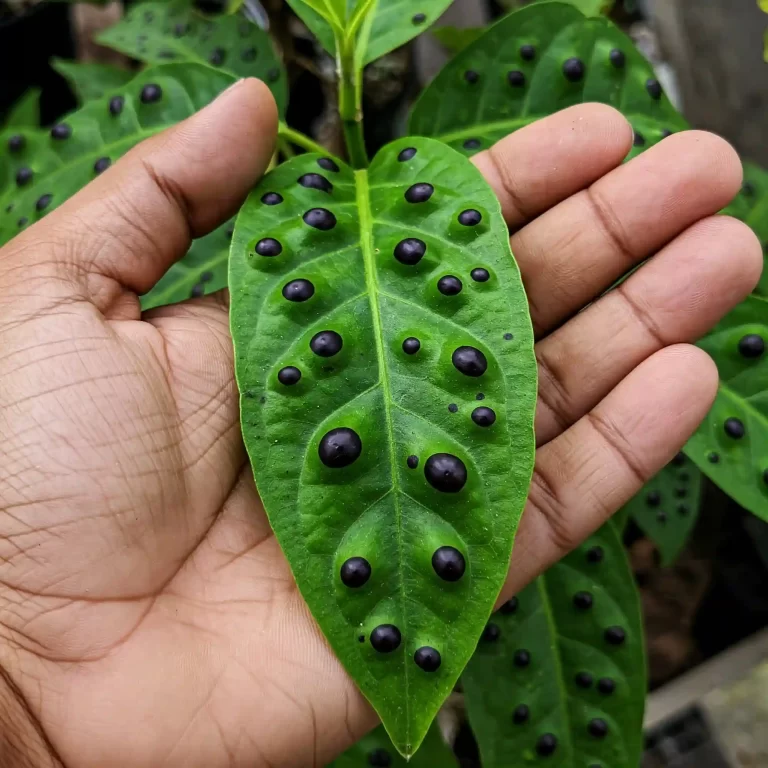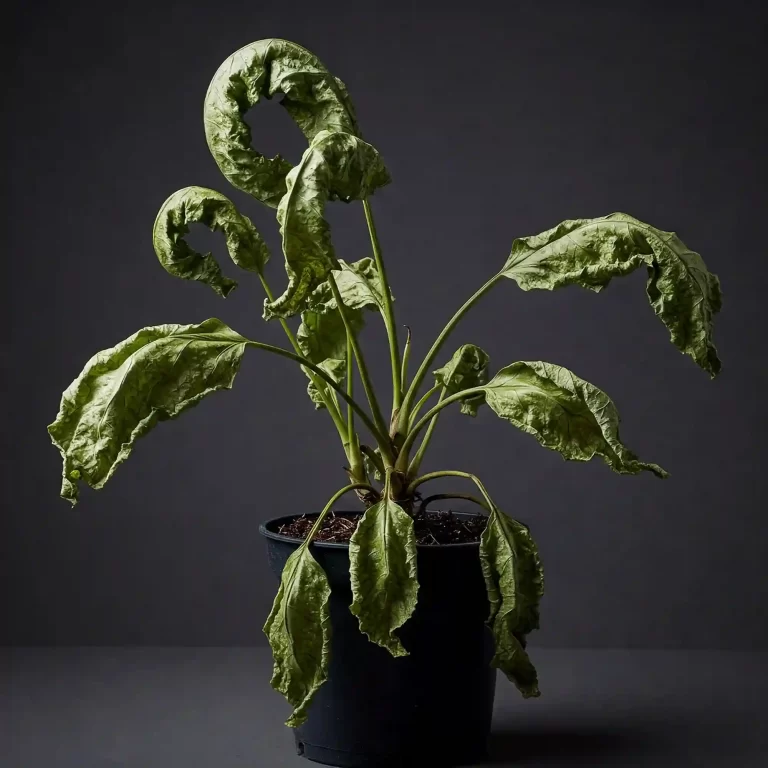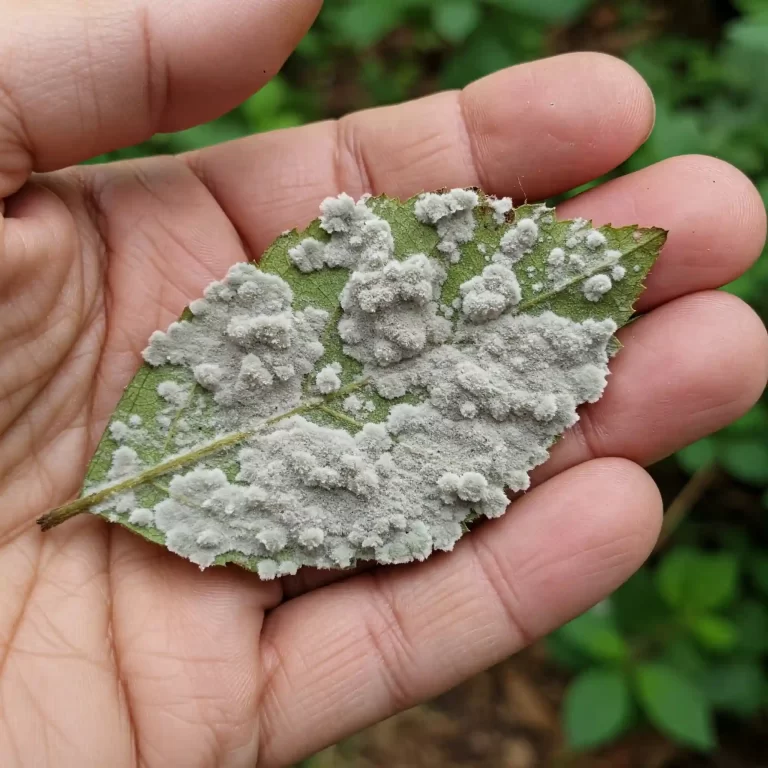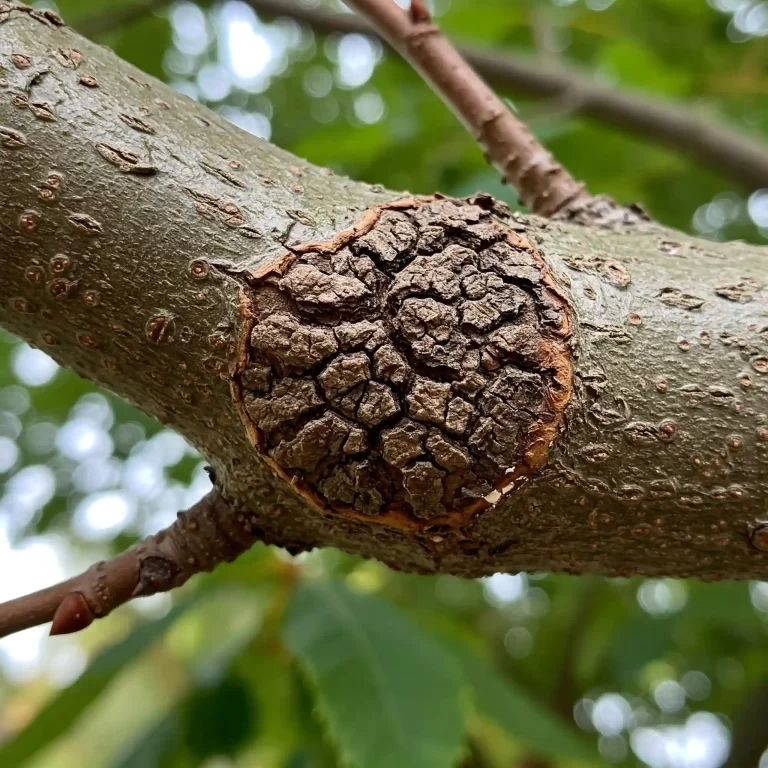Are you struggling with a persistent pest that’s wreaking havoc on your citrus plants? Have you noticed yellowing leaves, stunted growth, or sticky honeydew? If so, you may be dealing with the pesky cloudy-winged whitefly. This tiny insect can cause significant damage to citrus orchards, leading to reduced yields and lower fruit quality.
In this comprehensive guide, we’ll delve into the world of cloudy-winged whiteflies, exploring their life cycle, identifying infestations, understanding their impact on citrus plants, and implementing effective control measures. By the end, you’ll be well-equipped to combat this pesky pest and protect your citrus trees.
What is a Cloudy-winged Whitefly?
Cloudy-winged whiteflies, scientifically known as Dialerurodes citrifolii, are small, sap-sucking insects that belong to the family Aleyrodidae. They are commonly found in subtropical and tropical regions worldwide, where they infest a variety of citrus plants.
Physical Characteristics
- Size: Adults are typically 1-2 millimeters long.
- Color: They have a pale yellow or whitish color, often with dark markings on their wings.
- Wings: Their wings are covered in tiny hairs, giving them a cloudy appearance.
Life Cycle
The life cycle of a cloudy-winged whitefly consists of four stages:
- Eggs: Tiny, oval-shaped eggs are laid on the undersides of leaves.
- Nymphs: The eggs hatch into small, flat nymphs that feed on plant sap.
- Pupae: Nymphs develop into pupae, which are often covered with a white or waxy substance.
- Adults: Adult whiteflies emerge from the pupae and begin to reproduce.
Feeding Habits
Adult and nymphal whiteflies pierce plant leaves and stems to suck out sap. This feeding activity weakens plants and can cause them to become stunted or die.
Damage to Citrus Plants
Cloudy-winged whiteflies can cause significant damage to citrus plants, including:
- Leaf yellowing: Feeding can lead to yellowing and wilting of leaves.
- Stunted growth: Plants may experience reduced growth and development.
- Fruit drop: Infected plants may produce smaller, lower-quality fruit or may drop their fruit prematurely.
- Honeydew production: Whiteflies secrete sticky honeydew, which can attract sooty mold and ants.
Identifying Cloudy-winged Whitefly Infestations
If you suspect a cloudy-winged whitefly infestation, look for the following signs:
- Yellowing leaves: Leaves may turn yellow or pale.
- Stunted growth: Plants may appear stunted or unhealthy.
- Sticky honeydew: A sticky substance may be present on leaves and stems.
- Whitefly adults: Adult whiteflies can be observed flying around the plants.
- Nymphs: Tiny, flat nymphs may be visible on the undersides of leaves.
The Impact of Cloudy-winged Whiteflies on Citrus Plants
Cloudy-winged whiteflies can have a devastating impact on citrus production, leading to reduced yields and lower fruit quality. While the direct damage caused by these pests is significant, the indirect effects can be even more detrimental.
Direct Damage
- Leaf Yellowing and Wilting: Whiteflies pierce plant leaves and stems to extract sap, causing them to lose essential nutrients. This feeding activity can lead to yellowing, wilting, and premature leaf drop.
- Stunted Growth: As plants struggle to recover from whitefly infestations, their growth may be stunted. This can result in smaller, less productive trees and reduced fruit yield.
- Fruit Drop: Infected plants may produce smaller, lower-quality fruit or may drop their fruit prematurely. This can have a significant impact on the profitability of citrus orchards.
Indirect Damage: Sooty Mold
One of the most serious consequences of whitefly infestations is the development of sooty mold. This black, fungus-like growth thrives on the sticky honeydew secreted by whiteflies. Sooty mold can:
- Block Sunlight: The dark coating of sooty mold can reduce the amount of sunlight reaching plant leaves, hindering photosynthesis.
- Reduce Fruit Quality: Sooty mold can make fruit unsightly and reduce its marketability.
- Weaken Plants: In severe cases, sooty mold can weaken plants and make them more susceptible to other pests and diseases.
Economic Consequences
The economic impact of cloudy-winged whitefly infestations on citrus production can be substantial. Reduced yields, lower fruit quality, and increased costs associated with pest control can significantly reduce the profitability of citrus orchards. In some cases, severe infestations can lead to complete crop failure.
Economic Impact of Cloudy-winged Whitefly Infestations
| Impact | Description |
| Reduced Yields | Decreased production of citrus fruits due to plant damage and premature fruit drop. |
| Lower Fruit Quality | Reduced marketability of citrus fruits due to sooty mold and other damage. |
| Increased Costs | Higher expenses for pest control measures, including insecticides and biological control agents. |
| Loss of Income | Reduced profits or losses for citrus growers due to the economic consequences of whitefly infestations. |
It is essential for citrus growers to take proactive measures to prevent and control cloudy-winged whitefly infestations to minimize their economic impact.
Effective Control Measures for Cloudy-winged Whiteflies
To effectively manage cloudy-winged whitefly infestations, a combination of control methods is often necessary. Here are some effective strategies:
Cultural Practices
- Pruning: Regular pruning can improve air circulation within citrus orchards, making it more difficult for whiteflies to thrive.
- Sanitation: Remove and destroy any infected plant material to prevent the spread of whiteflies.
- Crop Rotation: Planting different crops between citrus trees can disrupt the whitefly’s life cycle.
Biological Control
- Natural Enemies: Introduce natural enemies such as ladybugs, lacewings, and parasitic wasps to prey on whiteflies.
- Beneficial Insects: Encourage the presence of beneficial insects by providing suitable habitat and avoiding excessive pesticide use.
Chemical Control
- Insecticides: Use insecticides specifically approved for whitefly control. However, be cautious of pesticide resistance and the potential negative impact on beneficial insects.
- Timing: Apply insecticides at the appropriate time in the whitefly’s life cycle to maximize effectiveness.
Integrated Pest Management (IPM)
- Monitoring: Regularly monitor citrus plants for signs of whitefly infestations.
- Prevention: Implement preventive measures to reduce the risk of infestations.
- Targeted Control: Use a combination of cultural, biological, and chemical control methods based on the severity of the infestation.
Comparison of Control Methods for Cloudy-winged Whiteflies
| Method | Advantages | Disadvantages |
| Cultural Practices | Low cost, environmentally friendly | May not be sufficient for severe infestations |
| Biological Control | Natural and sustainable | May require time to establish beneficial insect populations |
| Chemical Control | Quick and effective | Can harm beneficial insects and lead to pesticide resistance |
| IPM | Balanced approach, minimizes environmental impact | Requires careful monitoring and planning |
By carefully considering the specific circumstances of your citrus orchard and employing a combination of control methods, you can effectively manage cloudy-winged whitefly populations and protect your plants.
Preventing Cloudy-winged Whitefly Infestations
Preventing cloudy-winged whitefly infestations is crucial to protect your citrus trees and minimize the need for costly control measures. Here are some proactive steps you can take:
- Plant Healthy Trees: Start with healthy, disease-free citrus trees from reputable sources.
- Proper Site Selection: Choose a planting location with good air circulation and sunlight exposure.
- Monitor for New Infestations: Regularly inspect your citrus plants for signs of whiteflies.
- Remove Infected Plants: Destroy any plants that show severe signs of infestation to prevent the spread of whiteflies.
- Quarantine New Plants: Isolate new plants for a period of time to ensure they are free of pests.
- Use Row Covers: Cover young citrus trees with row covers to protect them from adult whiteflies.
- Maintain Plant Health: Provide adequate water, nutrients, and care to keep your citrus trees healthy and resilient.
Frequently Asked Questions (FAQs)
- What are the natural enemies of cloudy-winged whiteflies? Ladybugs, lacewings, and parasitic wasps are natural enemies of whiteflies.
- Can cloudy-winged whiteflies spread plant diseases? While whiteflies themselves do not directly spread plant diseases, they can indirectly contribute to the spread of pathogens by weakening plants and creating entry points for infections.
- How often should I inspect my citrus plants for whiteflies? It is recommended to inspect your citrus plants weekly, especially during the growing season.
- Are there any home remedies for controlling whiteflies? Some home remedies, such as insecticidal soap or neem oil, can be effective against whiteflies. However, it is important to follow the instructions carefully and use these products in accordance with local regulations.
- What is the best time of year to treat whitefly infestations? The best time to treat whitefly infestations depends on the specific life cycle stage of the pest. Consulting with a local agricultural extension agent can provide guidance on the most effective timing for your region.
Conclusion
Cloudy-winged whiteflies can pose a significant threat to citrus production. By understanding their life cycle, identifying infestations early, and implementing effective control measures, you can protect your citrus trees and maintain healthy, productive orchards. Remember to prioritize prevention and consider using a combination of cultural, biological, and chemical control methods to achieve long-term success.
By following the guidelines in this comprehensive guide, you can effectively manage cloudy-winged whitefly infestations and ensure the health and vitality of your citrus plants.




